Musée de Cluny, Paris
My first morning in Paris, July 6, I was walking to the Louvre when I came upon the Musée de Cluny and was jolted by memories of Medieval History courses at Rice University. Dr. Katherine Drew would be proud of me for stopping immediately and spending three hours there. Created in 1843 and conceived to be a museum of national antiquities, a vast collection was transformed in 1992 into the National Museum of the Middle Ages. A renovation of the museum was completed just this year and offers a thematic route through sculptures, stained glass, paintings, tapestries and more, showing the richness and complexity of the medieval world of Europe.
One of the most popular exhibits is the “Lady and the Unicorn” Tapestries. Here are two of the six tapestries featuring the coat of arms of the Le Viste family. They are examples of the millefleurs style, featuring a background strewn with floral motifs. Tapestries were popular beginning in the 14th century. Executed by weavers in France or the Netherlands, they were highly sought-after to decorate churches, castles, and homes of the elite.
Other tapestries that caught my eye portrayed the Life of Saint Stephen, (woven for the Cathedral in Auxerre where Marc LePechon lives), a Wine Harvest, and Musicians serenading a bathing lady.
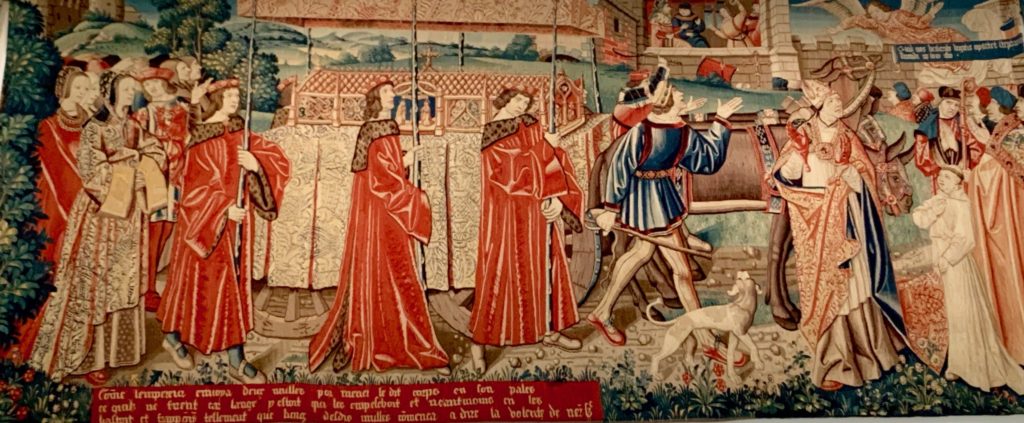
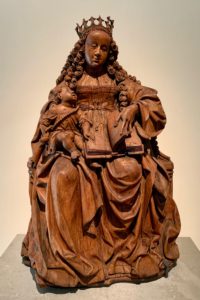 One of the sculptures I enjoyed studying was Seated Virgin and Child by Henrik Douverman, who lived in the Lower Rhine (present-day Germany) from about 1480 – 1548. The approximate date of the oakwood sculpture was 1540. It has well-carved folds and curls and traces of polychrome paint. I like the way the up-turned face of the Christ Child looks to his mother for instruction, though he didn’t show the curiousity I did about the crown the sculptor placed on his mother’s head.
One of the sculptures I enjoyed studying was Seated Virgin and Child by Henrik Douverman, who lived in the Lower Rhine (present-day Germany) from about 1480 – 1548. The approximate date of the oakwood sculpture was 1540. It has well-carved folds and curls and traces of polychrome paint. I like the way the up-turned face of the Christ Child looks to his mother for instruction, though he didn’t show the curiousity I did about the crown the sculptor placed on his mother’s head.
Another compelling piece was this example of Champlevé enameling crafted in Limoges in 1150. The subject is Christ and four disciples; the colors remain vivid.
In 1239 and 1241, King Louis IX acquired a set of relics, including the Crown of Thorns and a fragment of the True Cross. To preserve them in a suitable setting, he had a two-story chapel built in the heart of his palace on the Île de la Cité. This Gothic masterpiece was consecrated in 1248 just before Louis IX left on a Crusade. The stained glass windows and statues of the apostles that were not preserved during the 19th century restoration of Sainte-Chapelle were rescued by Musée de Cluny, where they are now beautifully displayed. 
Two days later we visited Sainte-Chapelle itself, close to Notre Dame, which is under restoration after a devastating fire in April 2019. There we saw an exhibit about how grimy and dirty the stained glass windows were at Sainte-Chapelle until a 7-year restoration was completed in 2015. The windows were fitted with a protective layer of glass to keep traffic pollution at bay without changing its appearance. Steve and I had attended a lovely concert at Sainte-Chapelle on our last visit.

Café des Amis in the courtyard of the museum was a congenial place to have lunch. I met a woman from Chicago who comes to the Cluny as often as she can; it’s her favorite museum in the world. Another woman from Richmond VA was very fashionably dressed. When I told her that I had thought she must be French, she replied, “I’ll tell my mother what you said. I was born here in Paris and she thinks my fashion sense has declined since I’ve lived in America!” Here are many more photos from Musée de Cluny. Enjoy!
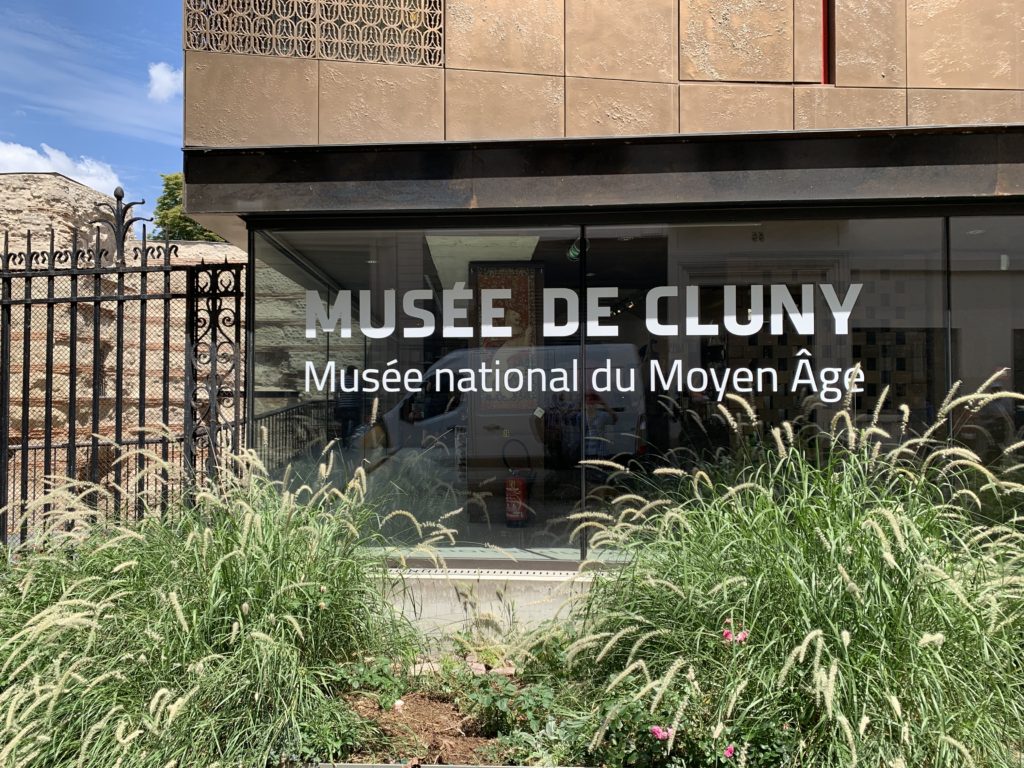
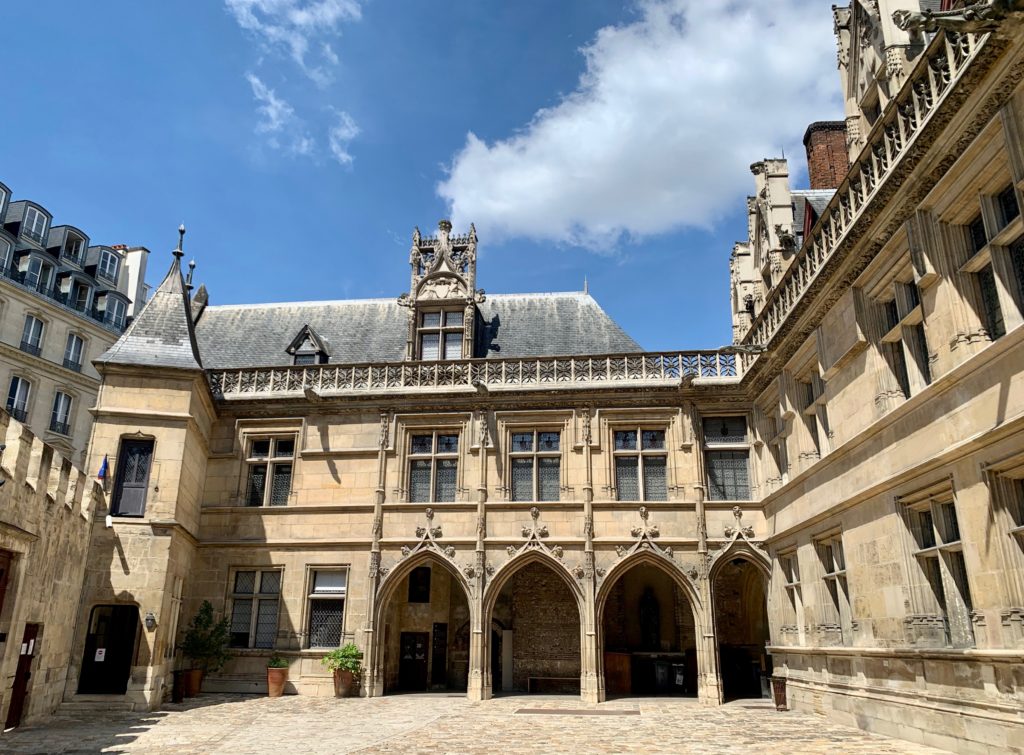
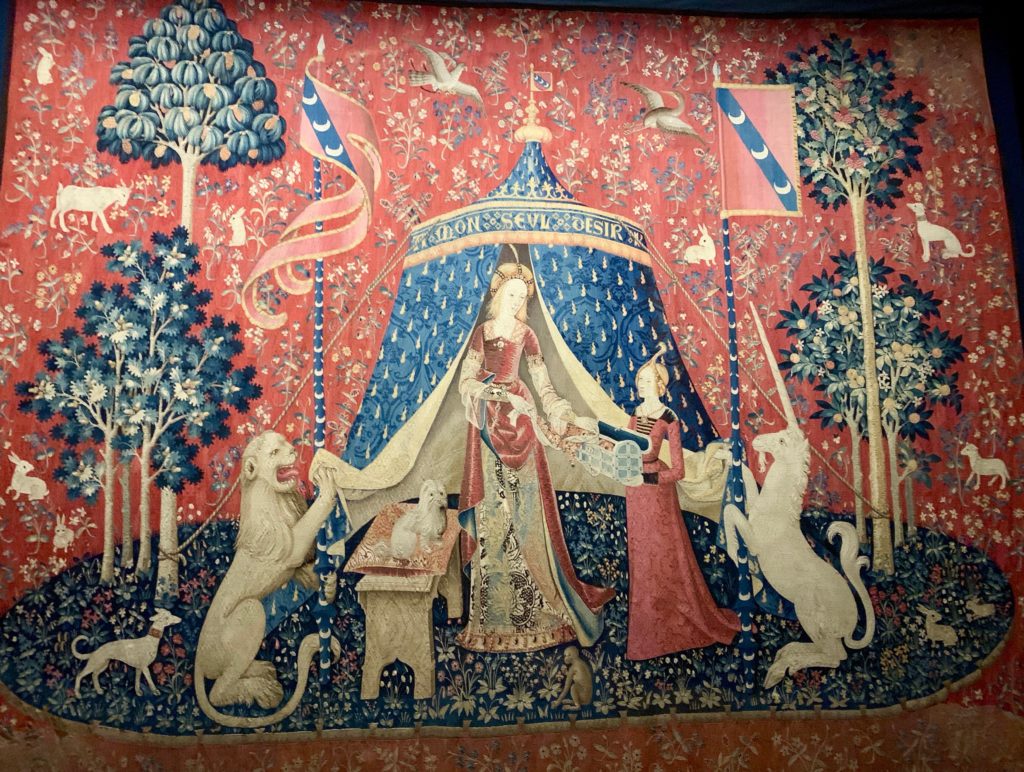
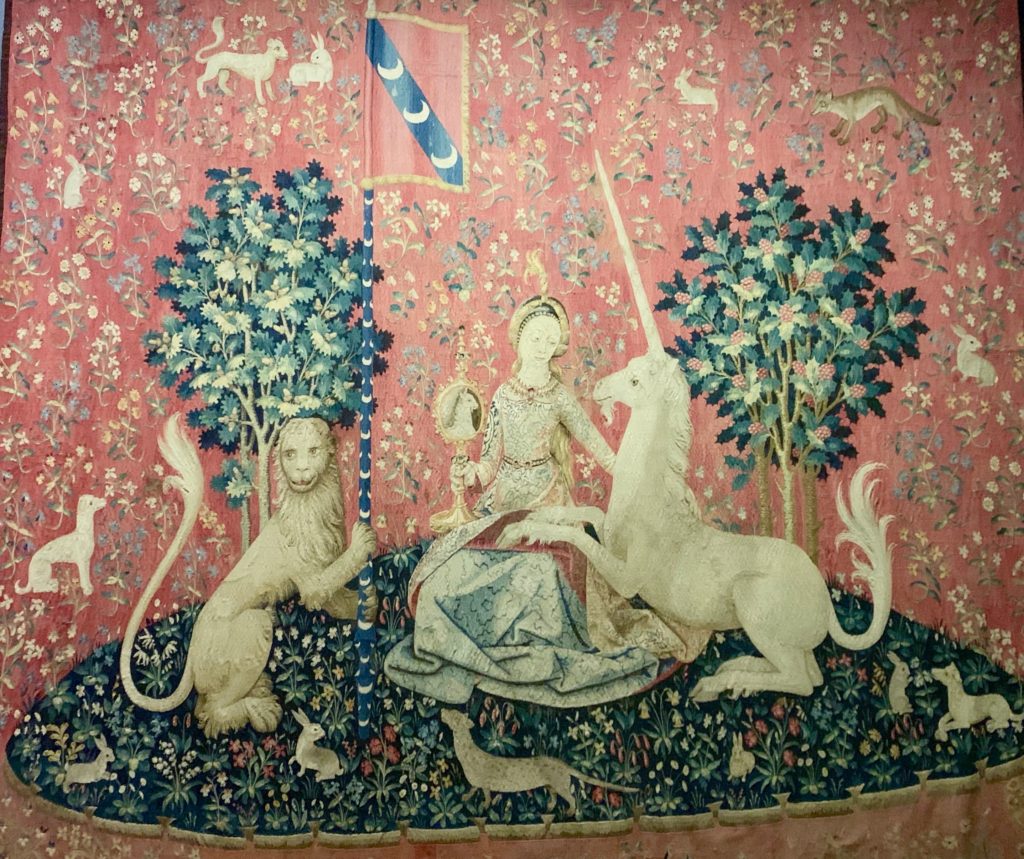
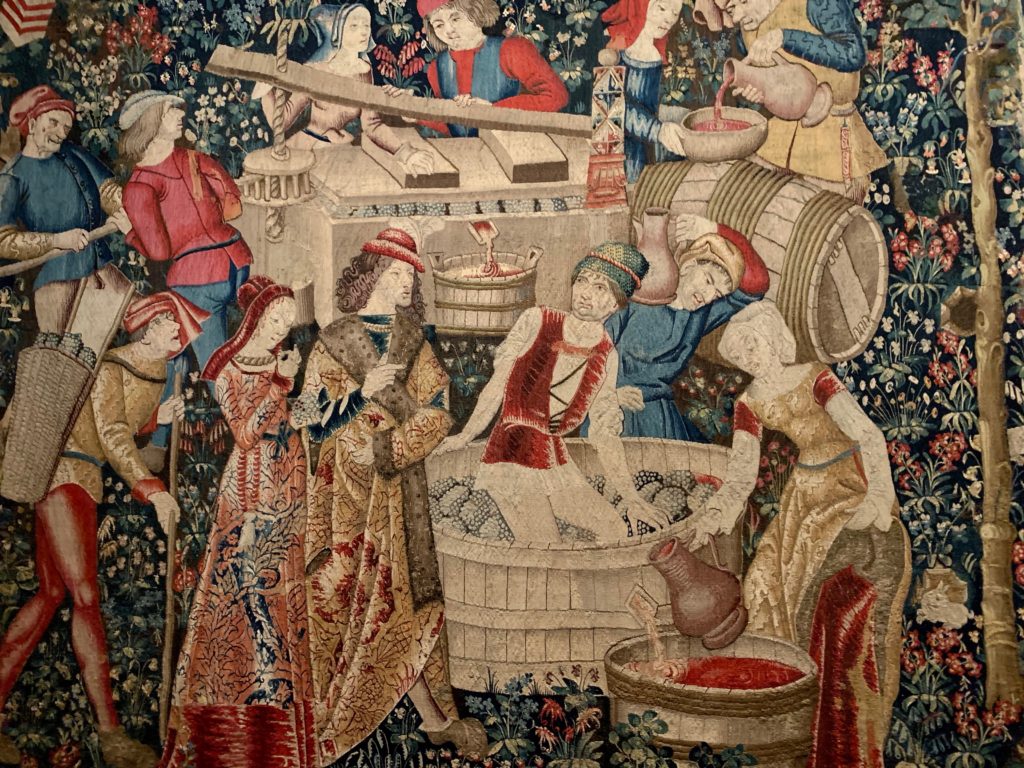
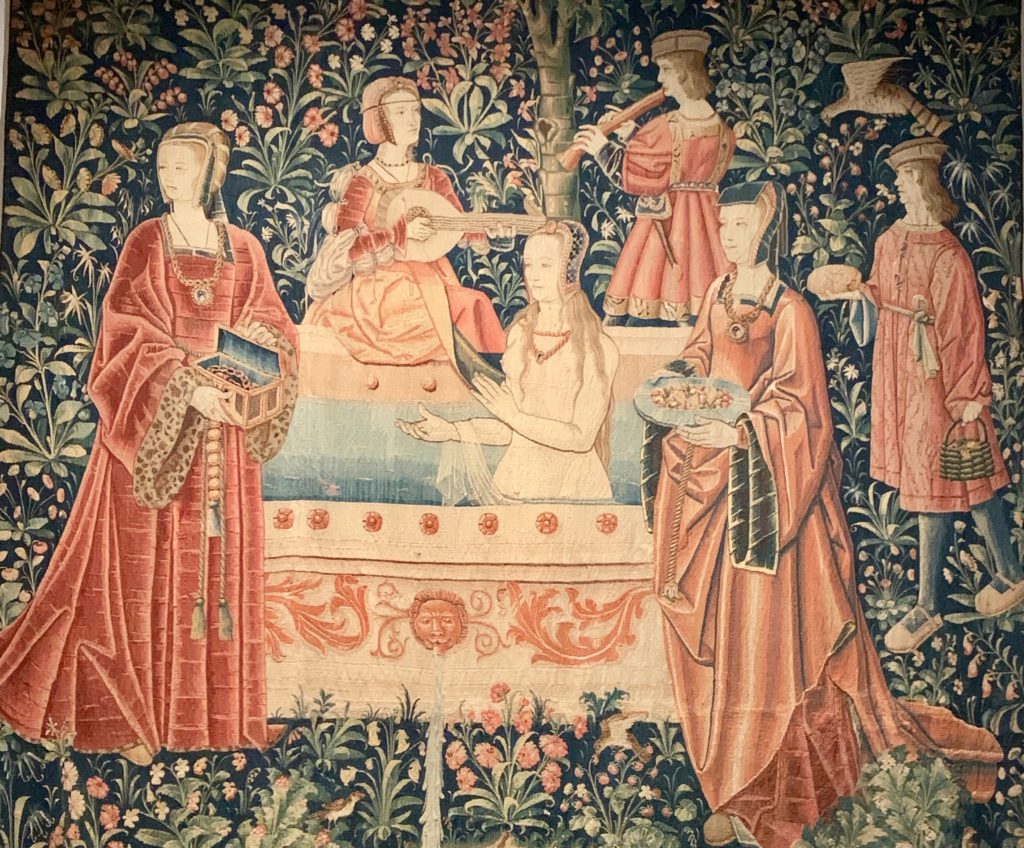

Leave a Reply